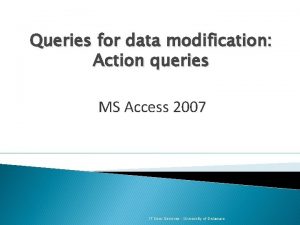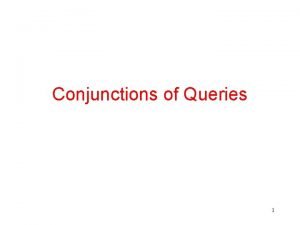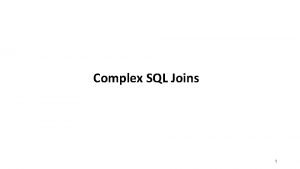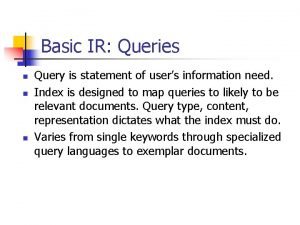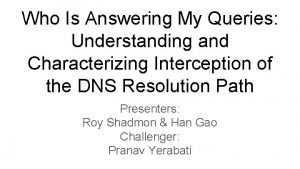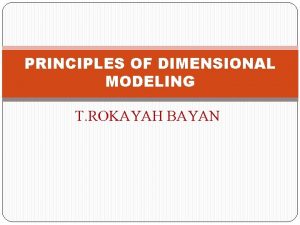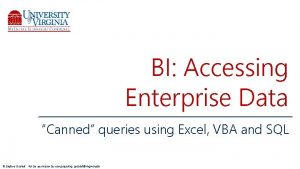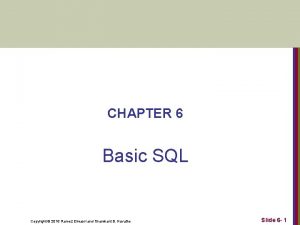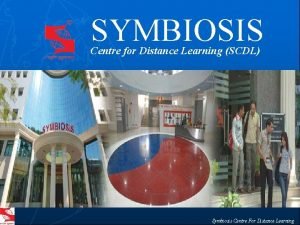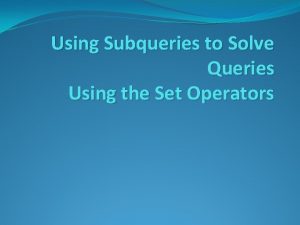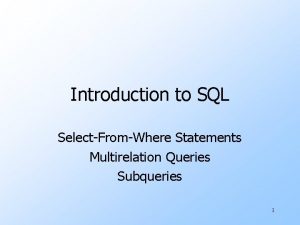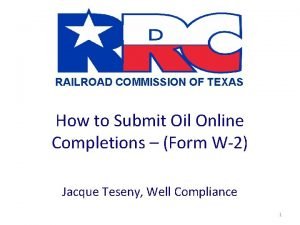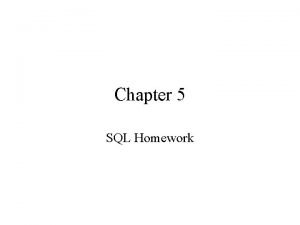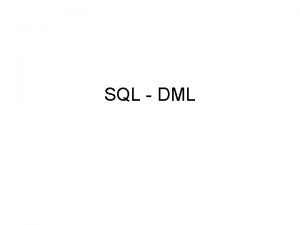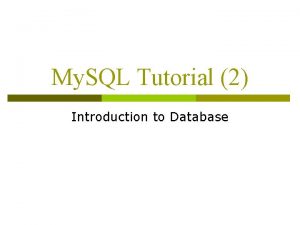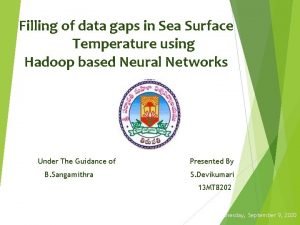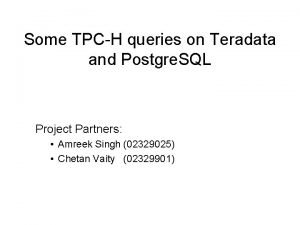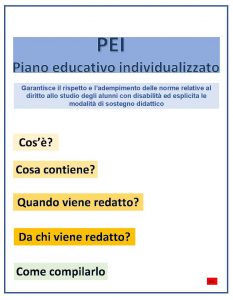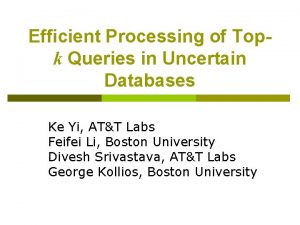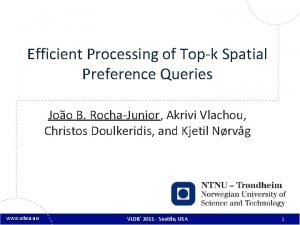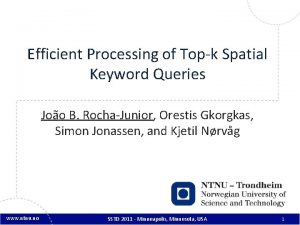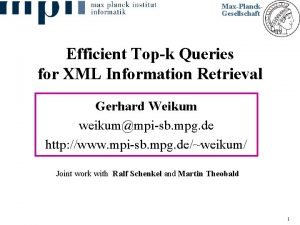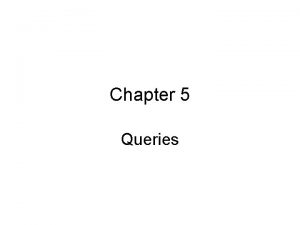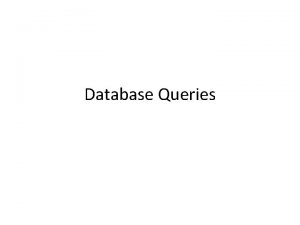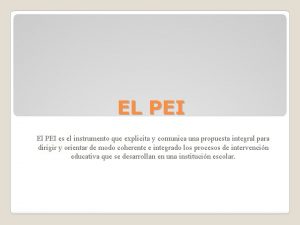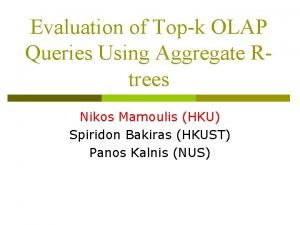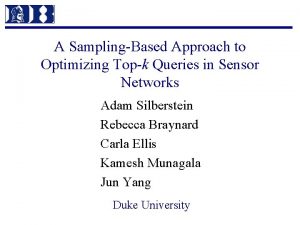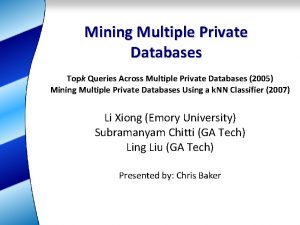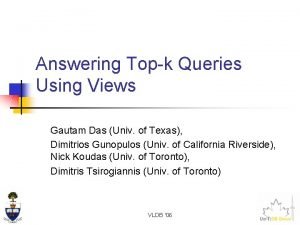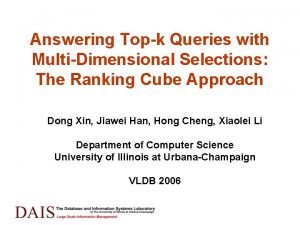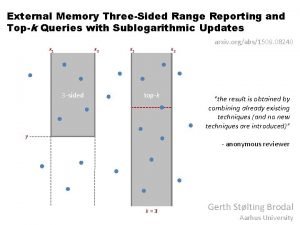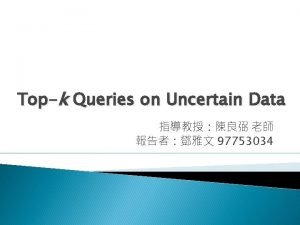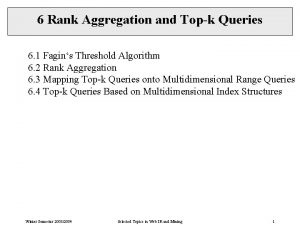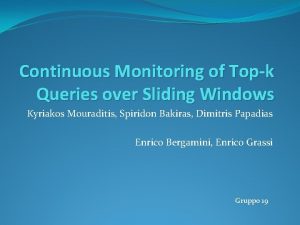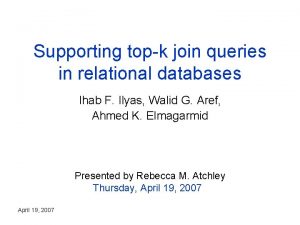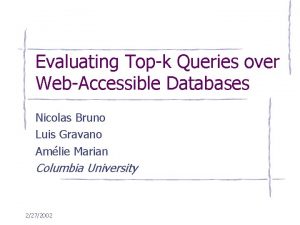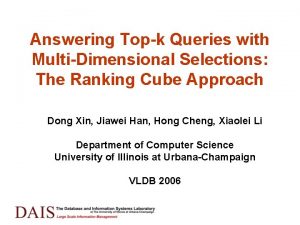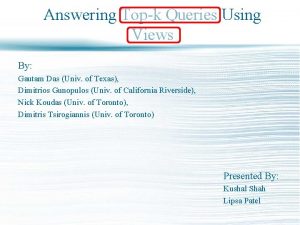Efficient Topk Queries in LargeScale Networks Pei Cao








































- Slides: 40

Efficient Top-k Queries in Large-Scale Networks Pei Cao Cisco Systems, Inc. Consulting Faculty, Stanford University

Motivation • Enterprise content delivery networks (CDNs) – CE: web cache and streaming media cache combined Data Center Central Manager 56 Kbps, 128 kbps, DSL … Branch Offices CE . . . • Number of branches: 50 - 2000 CE

Top-k Queries in CDNs Example queries: • Across all CEs, which URLs are accessed most often? • Across all CEs, which domains consume the most storage? • Across all CEs, which cached objects produced the biggest bandwidth savings? • etc.

Definitions • a network of m nodes, connected to a central manager (CM) • each node i has a reverse-sorted list of ( x, Vi(x) ) • an object’s sum V(x) = V 1(x)+V 2(x)+…+Vm(x) • Problem: find the k objects with highest sums • Goal: answer this question with minimum network traffic A generic problem in distributed systems

Existing Methods • “Naïve” Algorithm – Each node sends the full list of objects and their values to the Central Manager • Threshold Algorithm (TA) – Proposed by multiple groups in the database research community

The Threshold Algorithm (TA) • Example: find top 2 objects with max sums in three columns Node 1 (A, 10) (C, 8) (E, 8) (F, 8) (B, 7) (D, 5) (J, 1) (K, 1). . . Node 2 (B, 10) (D, 9) (F, 8) (H, 6) (G, 5) (C, 1) (A, 1) Node 3 (C, 10) (A, 9) (G, 8) (J, 7) (F, 6) (D, 4) (B, 1) . . . Central Manager (CM) T = 30; T = 26; T = 24; T = 21; T = 18; V(A)=20, V(C)=19, V(B)=18 V(A)=20, V(C)=19, … V(F)=22, V(A)=20, …

Adapting TA for Distributed Environments • Consists of multiple “rounds”, each round having two round trips – Round-trip #1 “sorted access”: CM asks for the next B objects on the lists and nodes respond – Round-trip #2 “random lookup”: CM sends a list of object names to nodes and nodes supply values – B=k • Issues – # of rounds unpredictable – O(m 2) network traffic

New Algorithm: Three-Phase Uniform Threshold (TPUT) • • Motivation: terminate in a fixed number of round trips regardless of input Operates in three phases 1. Lower-bound estimation 2. Pruning 3. Final lookup

Partial Sums and Upper Bounds • Partial sum: PS(x) = ∑Vi’(x) = Vi(x), if x has been reported by node i to CM 0, otherwise • Upper bound: U(x) = ∑Ui’(x) = Vi(x), if x has been reported by node i to CM Ti, otherwise Ti: Node i sends all objects with values > Ti

Examples Node 1 (A, 10) (C, 8) (E, 8) (F, 8) (B, 7) (D, 5) (J, 1). . . Node 2 Node 3 (B, 10) (D, 9) (F, 8) (H, 6) (G, 5) (C, 1) (A, 1) (C, 10) (A, 9) (G, 8) (J, 7) (F, 6) (D, 4) (B, 1) . . . CM PS(A) = 10+ 0 + 9 = 19 U(A) = 10 + 9 = 28 PS(B) = 0 + 10 + 0 = 10 U(B) = 8 + 10 + 9 = 27 … For any object O, PS(O) ≤ V(O) ≤ U(O)

Steps in TPUT Phase 1: • Manager Nodes: start top-k query • Nodes Manager: here are my top-k objects; • Manager: – Calculate partial sums of all objects – Take the k’th partial sum E 1 (E 1 ≤E); set t = E 1/m Phase 2: • Manager Nodes: send me all objects with value ≥ t • Nodes Manager: here they are • Manager: – Calculate partial sums again; take the k’th partial sum E 2 (E 1 ≤ E 2 ≤ E) – Calculate upper bounds of all objects – S = {objects whose upper bounds are ≥ E 2} Phase 3: • Manager Nodes: here is S; send me all objects in S • Nodes Manager: here they are

Example Node 1 (A, 10) (C, 8) (E, 8) (F, 8) (B, 7) (D, 5) (J, 1). . . Node 2 Node 3 (B, 10) (D, 9) (F, 8) (H, 6) (G, 5) (C, 1) (A, 1) (C, 10) (A, 9) (G, 8) (J, 7) (F, 6) (D, 4) (B, 1) . . . CM PS(A) =19; PS(C) =18; E 1 = 18; t = 6; PS(F) = 22; PS(A) =19; E 2 = 19 U(H) = 18, U(J) = 19 H and J are out! S = (A, B, C, D, E, F, G) S(F) = 22; S(A) = 20; S(C) = 19; … Top 2 objects are F and A.

Improving the Pruning Power • Set t = (E 1/m) * α, where 0<α<1 U(o) Node 1 Node 2 (x 1, . . . ) (x 2, …) (y 1, …) (y 2, …) (z 1, . . . ) (z 2, . . . ) . . . . Node n E 2/m t

Compression via Hashing • Problem: object IDs can be too long • Solution: send hashed keys of object IDs – – Node report to CM (hash(o), V(o)) If hash(o 1)==hash(o 2), then V = max(V(o 1), V(o 2)) Candidate set S is a set of hashed keys Size of key = log(total # of objects in all nodes) • Effect: – Algorithm is still correct – However, might need an additional round trip

Evaluating TPUT Algorithm • Trace-driven simulation • Optimality analysis

Trace Data for Simulations NLANR-10 daily web access from 10 NLANR proxies Worldcup-30 2 -hr logs from 30 World. Cup web servers DEC-64 split 1 -day DEC proxy traces into 64 sub-traces by client IP DEC-128 split 2 -day DEC proxy traces into 128 sub-traces by client IP NLANR-203 split NLANR traces into 203 sub proxy traces by client IP Berkeley-512 Split one week UCB traces into 512 sub traces by client IP

Performance Metrics • Communication costs – Unicast-bytes – Multicast-bytes – Messages are all compressed by gzip

Results on Unicast-Bytes m=10 m=30 m=64 m=128 m=203 m=512

Number of Objects Looked-Up Trace K=10: TA K=10: TPUT/0. 5 K=100: TA K=100: TPUT/0. 5 NLANR-10 166 18 1486 176 World. Cup-30 46 12 238 101 DEC-64 31 9817 244 DEC-128 6928 28 26680 250 NLANR-203 5576 28 43954 238 Berkeley-512 47899 41 180550 132

Results on Multicast-Bytes m=10 m=30 m=64 m=128 m=203 m=512

Optimality Analysis Main results: • TPUT is instance optimal for data sets with a log-log slope function C(n) – Zipf distribution: C(n) = n – Zipf distribution: opt-ratio = (m-1)*2 m +k*m • Setting α<1 reduces cost qualitatively. – Zipf distribution: opt-ratio = (m-1) O(√m ) +k*m/α

General Instance Optimality • Definition: An algorithm R is instance-optimal with optimality ratio C 1, if exists C 2, such that for any data series D, and any algorithm A, cost(R, D) ≤ C 1 * cost(A, D) + C 2 – cost is amount of network traffic – TA is instance optimal with opt-ratio = O(m 2)

Worst Cases for Fixed Number Round-Trip Algorithms Finding obj with highest sum Node 1 (A, 1) (C, 1) (X 1, 0. 6) (X 2, 0. 6). . . (Xn, 0. 6) (B, 0. 5). . Node 2 (B, 1) (D, 0. 2). . • TPUT is not general instance optimal • Nor can any algorithm that terminates in a fixed number of round trips regardless of input

Log-Log Slope Function List Position 1. . . Position j*C(n). . . . L(j) < L(j)/n • L(j) is the value at position j in a reversesorted list • The list satisfies loglog slope function C(n), if, for all j≤k, L(j*C(n)) < L(j)/n • For Zipf-like distribution L(j) ~ 1/jλ, C(n) = n 1/λ.

Properties of the Two Lower Bounds • Let E be the “true bottom” • E 1 ≥ E/m • E 2 > E/2 – E 2 ≥ E 1 – E 2 > E – E 1*(m-1)/m • For any x, V(x) – PS(x) < (m-1)*t V(x) – PS(x) < (m-1) * E 1/m E – E 2 < E 1 * (m-1)/m – E 2 > (m/(2 m-1))*E

Restricted Instance Optimality of TPUT (α=1) • Assume D is a collection of m lists all following log-log slope function C(n), then for any algorithm A, cost(TPUT, D) ≤ cost(A, D) * ((m-1)*C(2 m) + C(m)*k) – Proof: assume the optimal algorithm for D stops at position bi on list i, then L(bi) < E; • The number of objects in S from node i is ≤ bi * C(2 m) • Each node sends ≤ C(m) * k objects in round-trip #2

Effect of α<1 • Property: – If object x appears in n nodes in Phase 2 and U(x)≥ E 2, then its average value in those nodes R(x) ≥ E 2 * (1 -α)/n • Let li = the num of objects in S that appear in exactly i nodes in Phase 2, then: – 1*l 1 + 2*l 2 + 3*l 3 + … + m*lm ≤ C(m * (1+α)/α) * ∑bi – l 1 + l 2 + … + li ≤ C( i * (1+ α)/(1 -α)) * ∑bi – Size of S is l 1 + l 2 + … + lm

Analysis of α<1 • What’s the maximum l 1+l 2+ … +lm under the following constraints? – 1*l 1+2*l 2 + 3*l 3 + … + m*lm ≤ C(m * (1+α)/α) * B – l 1 ≤ C(1*β) *B – l 1+l 2 ≤ C(2*β) *B –. . . – l 1+l 2+ … +lm ≤ C( m * β) *B where β = (1+α)/(1 -α), B= ∑bi • Solution: maximize l 1, l 2, …, ld, and set ld+1, ld+2, …, lm to 0 – Li = C(i* β) *B – C((i-1)* β) *B – d * C(d* β) *B - ∑C(i* β) *B ≤ C(m * (1+α)/α) * B – Candidate set size S = C(d * β) *B

α For Zipf Distributions • For Zipf distribution, where C(n) = n, size of candidate set S is c*√m * B Optimality ratio for TPUT with α<1 is (m-1) * c * √m + m/α *k

TPUT for Hierarchical Networks Phase Estimation Phase 1: 2: 3: Lower-Bound Selection Final lookup by value & Pruning S={…} t=E/m * α . . . S={…} . . t’ = (E/m*n) * α’

Summary and Future Work • TPUT should be used for top-k queries in distributed networks – TPUT is instance-optimal under the log-log slope function assumption – Introducing α<1 improves performance significantly • Future work: – Evaluating TPUT for hierarchical and P 2 P networks – Distributed algorithms for other aggregate statistics

Backup Slides

Bandwidth Consumption of Threshold Algorithm Trace Raw Data K=10: TA Uni. Cast K=10: TA Multi. Cast K=100: TA Uni. Cast NL-10 26 MB 56. 3 KB 25. 9 KB 318 KB 132 KB WC-30 426 KB 31 KB 22 KB 96 KB 80 KB DEC-64 7. 4 MB 1. 7 MB 160 KB 4. 6 MB 359 KB DEC-128 15 MB 7. 2 MB 419 KB 24. 6 MB 1. 2 MB NL-203 44 MB 22 MB 143 MB UCB-512 78 MB 423 MB 16. 1 MB 1. 47 GB 31 MB 4. 2 MB

Bandwidth Consumption of TPUT+Hash Trace Raw Data K=10: TPUT-H Uni. Cast Multi. Cast K=100: TPUT-H Uni. Cast NL-10 26 MB 8 KB 7 KB 52 KB 49 KB WC-30 426 KB 44 KB 38 KB 99 KB 89 KB DEC-64 7. 4 MB 64 KB 59 KB 322 KB 300 KB DEC-128 15 MB 161 KB 150 KB 870 KB 828 KB NL-203 44 MB 154 KB 139 KB 764 KB 687 KB UCB-512 78 MB 1. 03 MB 978 KB 15. 8 MB 15. 3 MB

Unicast-Bytes for Top-100 Objects

Multicast-Bytes for Top-100 Objects

Varying α

Fixed-Number Round Trip Algorithms • Criteria by which a node decides to send objects: – By position – By name – By value • Any fixed-number round trip algorithm must include a “by value” operation • Any algorithm, if include “by value” operation, won’t be instance optimal

TA Running over Networks Node 1 (A, 10) (C, 8) (E, 8) (F, 8) (B, 7) (D, 5) (J, 1). . . Node 2 Node 3 (B, 10) (D, 9) (F, 8) (H, 6) (G, 5) (C, 1) (A, 1) (C, 10) (A, 9) (G, 8) (J, 7) (F, 6) (D, 4) (B, 1) . . . CM T = 26; looks up A, B, C, D V(A)=20, V(C)=19; can’t stop T = 21; looks up E, F, G, H, J V(F)=22, V(A)=20; can’t stop T = 10; stop

TPUT Phase 3: • Manager Nodes: here is S; send me all objects in S • Nodes Manager: here they are • Manager: calculate sums for objects in S; select the top k objects
 It indicates fierceness, ambition and cool-headedness
It indicates fierceness, ambition and cool-headedness Productively efficient vs allocatively efficient
Productively efficient vs allocatively efficient Productively efficient vs allocatively efficient
Productively efficient vs allocatively efficient Productive inefficiency and allocative inefficiency
Productive inefficiency and allocative inefficiency Allocative efficiency
Allocative efficiency Productively efficient vs allocatively efficient
Productively efficient vs allocatively efficient Nvdla
Nvdla Basestore iptv
Basestore iptv Virtual circuit vs datagram networks
Virtual circuit vs datagram networks Action queries in access
Action queries in access Disadvantages of eye gaze communication system
Disadvantages of eye gaze communication system Conjunctive queries
Conjunctive queries Complex sql join queries
Complex sql join queries Ir queries
Ir queries For any queries
For any queries Suggestions and queries
Suggestions and queries Answering my queries
Answering my queries Rrc completion query
Rrc completion query Any queries slide
Any queries slide Stefano grazioli
Stefano grazioli Basic retrieval queries in sql
Basic retrieval queries in sql Scdl student centre login
Scdl student centre login Using subqueries to solve queries
Using subqueries to solve queries Any queries images
Any queries images Wide world importers
Wide world importers Multirelation queries
Multirelation queries Texas railroad commission online queries
Texas railroad commission online queries Ingres algorithm
Ingres algorithm Hotel.hotelno=room.hotelno(hotel room)
Hotel.hotelno=room.hotelno(hotel room) Data manipulation language in sql
Data manipulation language in sql Standing queries
Standing queries J queries
J queries Sql queries for banking database
Sql queries for banking database Any queries
Any queries Wildcard queries in information retrieval
Wildcard queries in information retrieval Sql server management studio recover unsaved queries
Sql server management studio recover unsaved queries Tpch queries
Tpch queries Sql insert update delete query
Sql insert update delete query Cos'è il pei
Cos'è il pei Ejemplos de dimensión comunitaria en la escuela
Ejemplos de dimensión comunitaria en la escuela Pei internet
Pei internet









